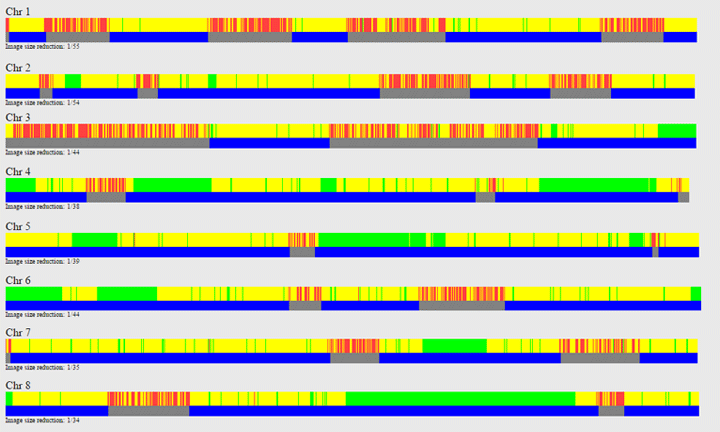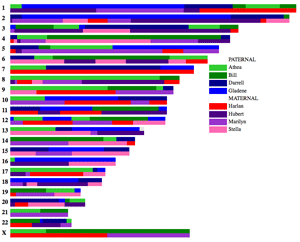Recently I was asked whether there is a way to tell a full sibling from a half sibling. Sometimes the total centimorgans are low for one but high for the other. You expect to share about 2550 cM with a full sibling and 1700 with a half sibling; so which is it if you share 2100 cM?
The answer is that full siblings will share many fully identical regions (FIRs), over about 25% of their chromosomes. Half siblings will have no FIRs of any significant size. The exception being some small ones if their parents are from the same population group but still far far fewer than a full sibling.
Here is a comparison of my first eight chromosomes with my brother made at GEDmatch. The green bars are where we are fully identical, in other words we got the same segment of DNA from each of our parents there.
You can click on the image to see the entire display at GEDmatch that this was made from.
Continue reading


